Roz Morris's Blog, page 112
March 27, 2011
Have faith – there is a book at the end of the tunnel
 Two weeks ago I dotted the last pixel on my MG/YA novel Life Form 3 and now it's got an agent who loves it. Phew.
Two weeks ago I dotted the last pixel on my MG/YA novel Life Form 3 and now it's got an agent who loves it. Phew.
A few months ago no one would have loved this book. Not even me. Although occasionally scenes and characters would flash a winning smile, there was so much that remained wrong with it. And I'd already been working on it for much of the year.
I have had to drill virtually to the Earth's core to find out what the story in this idea was. Then I had to work out the very best way it should be told. I have pulled it and punched it until it has revealed its themes and I have sweated over how to explore all that without bludgeoning the reader, being saccharine or vastly obscure.
I have refined every metaphor, analysed every action and reaction, listened to every niggling symptom that something is not right. I have put that book on the psychiatrist's couch and had endless discussions with it about what needs to change, whether characters are pulling their weight, whether we should let go of a scene I'd always cherished. I have been prodded back to the drawing board by every good film I've seen or great book I've read. Even the bad books seemed to be doing a better job than I was. The beginning has had more corrective surgery than Michael Jackson.
Finding the right voice was an ordeal all of its own. I've gritted my teeth at every respected blogger who said don't use present tense, because for this book present tense always felt the most natural way to tell the story. I've gritted at every post that warned about intruding narrators. I've needed a narrator who could place a cosy humanity around bleak events and get away with jokes that the main character would never be able to make himself.
For more than a year it seemed as though Life Form 3 was born damaged and has had to be nurtured, massaged, corrected, restrained, disciplined, until it was fit to stand up on its own, walk into an agent's inbox and say 'read me'. Of course, there are still a few notes to come about niggles and clarifications, but it substantially does exactly what I wanted when the idea first grabbed me. And more.
And do you know what? This is what it takes to get a novel right. This is normal.
This is why writing is not just about the first draft. It's why revising is not just correcting your spellings or twiddling with your literary expressions. This is why the hard work is the ruthless and endless rewriting, the questions we ask about what we are really writing about, the demands we make of ourselves to do better. This is why it takes so long.
And now, I start another. I write this post to help me through the storms ahead and for anyone else currently trapped by a difficult book. This is what it takes to do the job.
Where are you with your WIP? First draft, second, umpteenth?








March 20, 2011
Fiction within fiction – made-up worlds and stories inside stories
 Stories within stories, dreams and made-up universes are all tricky because once you leave your story's established world the reader may leave you too. How do you keep them with you?
Stories within stories, dreams and made-up universes are all tricky because once you leave your story's established world the reader may leave you too. How do you keep them with you?
Stories within stories can go badly wrong. The reader knows it is not 'true'. Yes, fiction isn't true anyway, but the reader allows that because they bought into it when they opened the book. But they didn't necessarily agree to read the characters' fiction, or spend long periods in their dream worlds. The reader needs to be connected securely with the other world and want to go there.
I've just been reading Tony and Susan by Austin Wright, which I discussed recently on Guys Can Read. Tony and Susan does story-in-story with aplomb. Here's how.
Susan, who is comfortably married with 2 children and a nice home, is sent a novel written by her ex-husband, Edward, who she hasn't seen in 20 years. When they split up decades ago, he was a discontented drifter making incompetent attempts to be creative. Now he comes out of the blue and asks Susan to read his novel because she was 'always his best critic'. Susan feels awkward about it – and not just because she's worried the book will be awful. There's difficult history between them – she feels complicated and guilty – and she's dreading what she'll find in the novel.
So, by the time we get to this novel within a novel, we're curious. We want to see if it will be bad – but we're not too worried about that because the (real-life) author has been assured and entertaining so far. And also we've become connected to Susan's reactions. We have inklings that there is an older, raw Susan in dread of being woken. So we are eager to see what is in Edward's book and how she reacts.
So the first rule of stories within stories is this: give us something we want to find.
When do you introduce it? As soon as you like, so long as you tick those boxes.
You may not need to wait very long. Tony and Susan has a prologue and a short first chapter and we're into the book within the book. (Yes, a prologue. This writer is happy-slapping several writing taboos – and getting away with it.)
Another of my favourite books with several tiers of fictionality is The Bridge by Iain Banks. The Bridge starts with a man trapped behind the wheel of his crashed car, in pain and terrified. A mere two pages and we are into a parallel fantasy world which is his consciousness while he is in a coma. In the coma world are clues that anchor us to the real-world scene we've just read. Some random delirium words – 'the dark station' – become the first line of the coma world. There are other details too – a strange, O-shaped bruise on the man's chest, which has given him his coma-world name, and which we know was from impact with the steering wheel. (Although the book does get flabby after a while, with dream sequences run to briar…)
Second rule of stories within stories
Give us details that anchor us and help us understand what we're seeing. Another master-stroke about Banks's coma-world is its setting on a giant, neverending bridge – the Forth Bridge, where the accident happened.
Here's the third rule of stories within stories
Make both stories satisfying. Tony and Susan's story within the story is a harrowing thriller, with every bit as much tension as the story around it. Often I see manuscripts where the writer is more interested in one strand than the other. It's often tricky to make sure the crescendos complement each other, but, hey, you knew it would be a challenge,
Fourth rule
Make both stories affect each other. So the characters have to be changed not only by what they are doing in the real world, but what is happening to them in the other one. It all needs to knit together to make something bigger than both stories separately – otherwise why have them in one book at all?
Again, Tony and Susan has it nailed, and in rather an interesting way. The Tony part (Tony is the fictional MC) is a story of literal, bloody revenge. The Susan part is about psychological revenge. Edward (the writer) knows exactly how to push Susan's buttons and prod her insecurities. Because of what Edward is making Tony go through, he's forcing her to have a relationship with her again, through the book, because he knows he's making her react. That's all very uncomfortable.
Do you have any rules for writing stories within stories? Do you have any favourite novels – or films – that do this particularly well? (Thank you THQ Insider for the picture)








March 19, 2011
Roz, you broke BlogTalkRadio
 I did live radio last night! I was guest on Page Turners, an internet radio show on BlogTalkRadio hosted by Meg Collins, Antoinette Dickson and Nancy Denofio. These ladies live to write. Meg is a poet, scriptwriter and the author of scores of children's books and resides at the delightfully named blog The Diary of a Starfish. Nancy is a debut poet and the author of the hauntingly titled What Brought You Here? and Antoinette is taking her first steps to becoming a published author and has a blog A Serendipitous Sojourn.
I did live radio last night! I was guest on Page Turners, an internet radio show on BlogTalkRadio hosted by Meg Collins, Antoinette Dickson and Nancy Denofio. These ladies live to write. Meg is a poet, scriptwriter and the author of scores of children's books and resides at the delightfully named blog The Diary of a Starfish. Nancy is a debut poet and the author of the hauntingly titled What Brought You Here? and Antoinette is taking her first steps to becoming a published author and has a blog A Serendipitous Sojourn.
As I said, we all live to write – so of course were quite challenged to get a hook-up across the Atlantic without using Skype. Just don't ask why we didn't use Skype – you won't get a civilised answer, not least because none of us know. So the first part of the show, Antoinette and I had the airwaves to ourselves while Nancy was shouting into a dead line and Meg was marooned in another pocket of communications limbo.
While Antoinette and I made writerly chit-chat we were all conducting a fraught conversation on email and Facebook: 'Where are you?' 'You have to log in' 'I am logged in' 'I can see you on my desk but can't hear you'. 'Roz you broke BlogTalkRadio'. And so on.
But the airwave fairies released Nancy and Meg in the end, and they grilled me about how many books I've sold ghostwriting, my film with Matt Damon, the Morris writing household … and got me to talk quite a lot about the novel I have on submission, My Memories of a Future Life.
You can listen to it again here… and a proper post is coming tomorrow – on stories within stories, and fantasies within story worlds.








March 17, 2011
Well I'll be Twitterviewed! Big questions answered on a bird's toenail
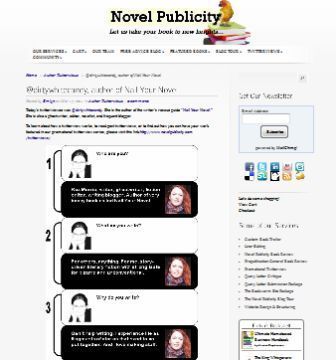 I just got Twitterviewed – interviewed on Twitter, asked enormous questions to which I had a titchy 140 characters to reply.
I just got Twitterviewed – interviewed on Twitter, asked enormous questions to which I had a titchy 140 characters to reply.
Twitterviews are the brainchild of Novel Publicity, which has a helpful blog and a website that offers marketing services to authors. You can find out more about Twitterviews here, including how to request one for your book or as part of your blog tour.
But get in training to be snappy – I was asked all the big questions - why I write, what Nail Your Novel is, what my novels on submission are about … answers on a postage-stamp…
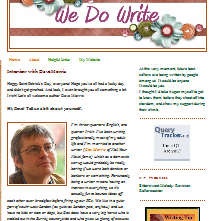 Also, the other half of the Morris writing clan has been out and about in interviewworld today. If anyone's curious about Husband Dave, he just did a considerably less squeezed, but lovely interview at Dorothy Dreyer's We Do Write.
Also, the other half of the Morris writing clan has been out and about in interviewworld today. If anyone's curious about Husband Dave, he just did a considerably less squeezed, but lovely interview at Dorothy Dreyer's We Do Write.








March 15, 2011
Back at Guys Can Read with one of my favourite novels
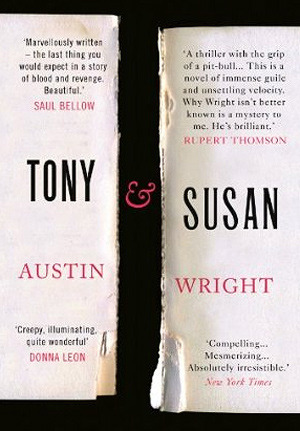 Those lovely dudes at Guys Can Read have invited me back to recommend one of my favourite books. I chose Tony and Susan by Austin Wright. This novel manages to pull off a trick I have seen done badly so many times – the story within the story. Why is it often done badly and how does this author do it well? Head on over to Luke and Kevin's to find out – and also hear some other recommendations of thumping good reads.
Those lovely dudes at Guys Can Read have invited me back to recommend one of my favourite books. I chose Tony and Susan by Austin Wright. This novel manages to pull off a trick I have seen done badly so many times – the story within the story. Why is it often done badly and how does this author do it well? Head on over to Luke and Kevin's to find out – and also hear some other recommendations of thumping good reads.
As usual, I have way more to say on the subject, so on Sunday I'll be discussing stories within stories, and fantasies within story worlds.
I'm taking questions about it now, so if you have anything you want to ask, leave a comment here!








March 13, 2011
My book is Kryptonite: do I need a secret identity?
 If you change your name, can you hide from the people you're writing about?
If you change your name, can you hide from the people you're writing about?
I've had this rather interesting question: I saw you had written under pen names, and wondered: Is it difficult to keep your cover? I very much need an assumed name, as my novel will include details that will not go down well here with the powers that be. Said details won't include names and faces, even so, I'd like to stay on the safe side. Do you have any advice or warnings?
As they say in magazines, names have been concealed and details changed to protect identities.
First – is it easy to keep my cover? Yes, because I'm not in hiding or in danger of being unmasked. The 'authors' whose names I ghostwrite under are real people. They appear on TV, they go to book signings and talk to the media and fans when necessary. Everyone who knows I wrote the books is within the industry and has a vested interest in keeping my cover. (But that also means I have to too…)
But it's a different matter if you are genuinely worried about the consequences if someone can identify you as the author. And I'm probably not about to make you feel better.
Here is a law of writing. If you write a book, people you know will see themselves in it even if you categorically did not use them. Your family, your ex, your colleagues. Even your cat if he could be bothered.
Names have been changed
Will a pseudonym mean you don't provoke those comparisons? It might be enough for situations where the aggrieved party might write an angry letter or exclude you from the Christmas card list. But this correspondent seems to fear a lot more than that.
If your revelations are sufficiently annoying, using a pseudonym is virtually pointless. The publisher is not obliged to keep your identity a secret if a legal letter arrives or the heavies call. They don't have the code of conduct that journalists have, of protecting their sources. Publishing contracts, even for the sweetest book about daffodil husbandry, have a clause that requires the author to bear the cost of any legal claims or injunctions.
Changing names and faces does not stop someone being identified in your story, as many libel cases will demonstrate. If your friends will see themselves in your novel no matter what, think how sensitive someone might be if they suspected they or their organisation were the material for your book. You might find yourself with a libel writ, in breach of a contractual obligation, or even the Official Secrets Act. If you feel you must hide your true identity, maybe you would be better seeking legal advice and finding safe ways to use sensitive material. Much depends, of course, on what you're writing, but an agent should be able to advise you, or a specialist media lawyer.
However, if you are determined to make fiction out of your experience, there's a lot you can do without risking legal repercussions or concrete overshoes.
Spilling the beans – the safe way
Here was my advice.
First, write a private draft, with everything you have to say, for your eyes only. Then think about how to make it into a story. Real life has a habit of being messy, meandering and inconclusive. It often lacks coherence, artistry and all the neatness that make a crafted story satisfying.
Then start to camouflage – by looking for ways to change the story into fiction while telling a core truth.
Find themes to highlight – this will allow you to hone your main plot/ sub plot structure.
Remodel the characters into roles. There will probably be far too many people in the real-life version, so you'll have to merge some of them. And in fiction, characters tend to have defined roles. There will be a hero, an antagonist, perhaps a mentor, perhaps a loyal friend. Make a list of character archetypes.
Sometimes using archetype lists can seem too formulaic, but you're not doing this to paint by numbers, you're working out what to do with a messy, real cast. Terrell Mims has an excellent series on character archetypes and how they work in a story.
Make a conscious effort to let go of real events. You have passed into fiction now – the gods aren't going to examine you on what really happened. Your duty is to make a story that examines the themes, motivations and behaviours that kicked you to the writing desk in the first place. Identify gaps in the story and invent egregiously to fill them. It will probably be much better than the real version was, and will carry your truths more convincingly to the reader's heart.
If you're having trouble getting it all in one book, don't try. Save material for another. This isn't your only shot and publishers want a writer who can run and run.
Of course, all of us pour our life experiences, relationships, traumas and triumphs into our fiction – that's unavoidable. For some of us the urge to write comes from a zeal to lift a lid, right a specific wrong. It's possible to do that under quite a heavy smokescreen.
What would you add? Have you had to tell a story and camouflage it heavily? Relax… your relatives, friends, former employers will never read this blog… Share in the comments!








March 8, 2011
Ghostwriting and why I love Ian Fleming – interviewed by Guys Can Read
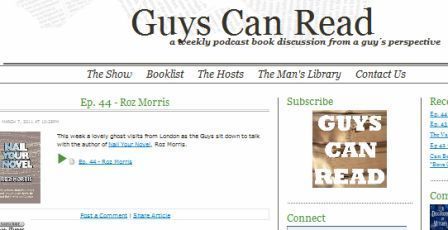 Today I'm very excited to be guesting on the books podcast Guys Can Read.Very, very excited, actually, as I've been evangelising about their show ever since I discovered them.
Today I'm very excited to be guesting on the books podcast Guys Can Read.Very, very excited, actually, as I've been evangelising about their show ever since I discovered them.
Guys Can Read is a weekly podcast by Luke Navarro and writer Kevin McGill. They adore fiction, period. They review everything from Jonathan Franzen to Star Wars novels, with equal expectations of great storytelling, strong characterisation and robust themes. They're not afraid to pick apart what doesn't work, regardless of how hallowed it might be, to venture into genres outside their usual tastes (which are pretty wide anyway) and to celebrate a darn good book even if it's in a genre that's normally sneered at.
Kevin is putting his story instincts to good use on his fantasy novel Nikolas and Co, which you can read about here. Luke, meanwhile, sets himself challenges. Last year he read 52 books, and washed them down with yet more narrative in the form of 52 games and 52 DVDs. This year they channelled their zeal into Boys Can Read – a Skype school visit where they risked withering ridicule and worse to persuade a class of 28 MG boys to swap games for good old books.
If you love reading, if you live for fiction that leaves you provoked, moved, flabbergasted, shaken, stirred, touched, tickled, amused or amazed, then you'll love these gutsy podcasts – whether you're a guy or not. But I am extremely honoured to be welcomed as their first girl guest…
What did we talk about? A bit about writing, why I blog, but most of all, writers who give me major palpitations, especially Ian Fleming.








March 6, 2011
How I know when I've got the right ending for my novel
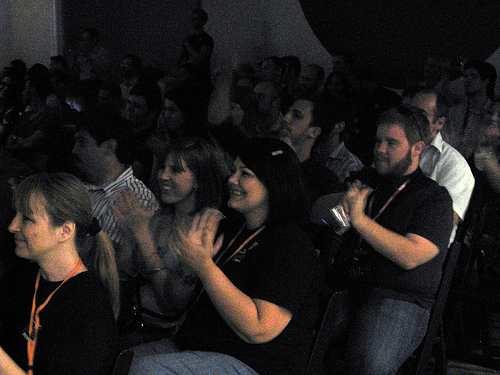 There are often a number of ways to end a story. Many options might be logical or surprising. How do you pick the right one?
There are often a number of ways to end a story. Many options might be logical or surprising. How do you pick the right one?
What makes a good ending? Three words: surprising, inevitable and right.
The first two categories are linked – and come down to what events you choose and how you seed them.
For me, thinking of events isn't the biggest problem. I can think of many ways to tie up a tale. What I want is the one that will be right.
What is the right ending?
A story is more than a series of stepping stones. It is an emotional journey. There is a reason why it finishes where it does. The end comes when there is a natural feeling of resolution, that the problem, whatever it was, is solved and will never need to be revisited (unless you're brewing a sequel). So a good ending is more than the knotting of loose threads. It has a quality that psychologists call closure. It is a feeling that there is nothing more to deal with.
How I find the right ending
To find my true ending, I go to the beginning. I look at the core question that is asked, and all the underlying subcurrents. What does the character need, today, next week, in the long-term future? Why are these such big issues? What about the questions they don't even know about yet, which will be uncorked as they go through the story?
I ask myself what it will feel like when all those are answered. For My Memories of A Future Life, my adult novel which is currently on submission, the answer came on one of my running sprees. Exhaustion plus endorphins often lead me to interesting insights, particularly when a story is keeping itself obscure. I pounded along with, of all things, the George Michael album Older in my headphones. You may smirk but at the end was a short wistful track with one lyric: 'feels so good to be free'. Sure it's cheesy, but My Memories of A Future Life would not be done until the MC was able to say that.
I also realise it's the song for the end of Life Form 3, the MG novel I am now finishing, and it could well be for the next adult novel I am incubating… hey maybe I'm developing an authorly theme here. But when I first drafted Life Form 3 I had a different ending. It had logic and surprise, but not closure. So I took my running shoes for a spin (with Boards of Canada and Peter Gabriel, since you ask), and examined all the questions in the character's life. That guided me to ditch the final third of the novel and feel my way to the ending that brings true resolution.
Last words first
The children's writer Alan Garner, author of The Weirdstone of Brisingamen, would think of the last line of his novel before any of the others. That's when he knew he was ready to start writing.
I don't necessarily plan the last line, but I do plan the last feeling, or the vibe of the shot if it was a movie. When I have brought the story there, I know I have the right ending. (Thank you, Moriartys, for the pic)
How do you find the right ending for your story?








February 27, 2011
How do you know what to cut? Tune into the rhythm of your story
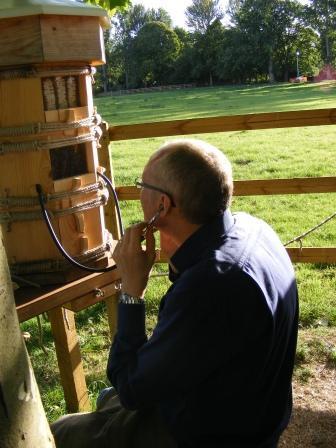 Learning to cut irrelevant or overlong passages is one of the most important things we do when we polish our novels. But sometimes it's not easy. We're all guilty of trying to shoehorn in precious passages that spoil the overall pace. Do they really have to go?
Learning to cut irrelevant or overlong passages is one of the most important things we do when we polish our novels. But sometimes it's not easy. We're all guilty of trying to shoehorn in precious passages that spoil the overall pace. Do they really have to go?
I've been having a conversation with a writer friend about cutting material from his WIP. Explanations, back story, discursive scenes, flashbacks, pieces in between the main action are all interrupting the action and bogging the story down.
He's scratching his head and saying 'I've got to get this all in because it's all important and interesting, I can't cut it any more'.
And I'm saying: yes you can.
One of the major lessons we learn as we mature as writers is that we cut an awful lot of perfectly nice material. Because when we look at the story as a whole, there isn't anywhere for it to fit.
Yes you can cut it
When I was a journalist (which I still am occasionally), we would have a specific space for a news story. Fifty lines, not seventy-five. Not even fifty-one. Not even if all seventy-five lines were fascinating and useful. It's fifty lines because its subject does not need any more room in this paper as a whole, because there are several other stories that need space too. So I'd take the story of seventy five lines and would wield the axe. And I learned this. There are ALWAYS things you can leave out. And the story will still make sense and do the job you want.
News journalism is an extreme example, but all artforms work to limits. Even novel writers are working in a confined space. I'm not talking here about wordcounts but the reader's attention – how long they will read a scene before they get fidgety and think you've spent too long on the same thing.
Your story has a rhythm
A story has a natural pace. It can be fast, as in thrillers, or slow, as in more literary works. Whatever speed your story goes at, this pace is what keeps the reader tingling with anticipation. It is a natural structure that dictates the highs and lows, which characters we hear from next, whether the next scene is a screaming chase or a quiet meditation. It governs the story in the same way that a rhythm governs a piece of music, or a heartbeat governs a person. If we do something that breaks that rhythm, we lose command of the story and the reader knows.
When we edit a novel, we have to tune into this rhythm. It tells us whether to cut from a scene or add to it. Whether we have too much of one storyline and not enough of another. Whether we need to ditch the digression and bustle along to the next development. It works at a micro level too, when we hear the beat of our sentences and paragraphs.
Precious cuts
There is always material you wish you could have got in but couldn't. Look at the deleted scenes on any DVD. Some are trimmed because the film had to be 90 minutes but others go because they tripped the story up, or kept the audience going round a loop too long. Jettisoning them was often painful. They contained a lot of work – they were fully shot and sometimes even scored. But they went.
Hearing the rhythm
For me, the first inkling comes as feeling that a sentence, paragraph or scene is too long. And then I usually bite my lip and think: but I can't make it any shorter, can I? Or I might find my scene has two emotional beats at the end, but there's only room for one. If I leave the second one in, will it trip the pace of the story up?
The answer is usually yes. And so I find a way to cut.
Being this ruthless is not easy. But a story – short or long – that is edited with awareness of this rhythm is elegant and persuasive.
Tune into the rhythm of your story.








February 22, 2011
How do you start being a writer?
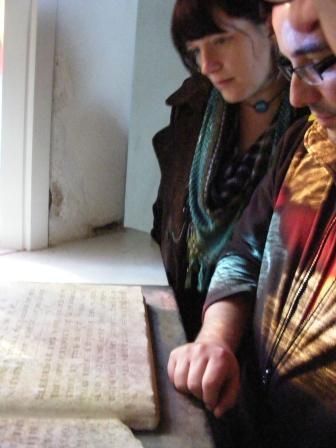 I had this email today, and have to share it. 'I am in my early 30s and took a degree in IT. I have had 3 jobs in the past 10 years and feel this is still not where I am meant to be. But it was drummed into me that you can't get a career or financial stability as a writer. It's all I ever do in my spare time. I borrow about 7 books from the library each week, I love to share what I see in the world with others. How do I take that first step? Jasantha'
I had this email today, and have to share it. 'I am in my early 30s and took a degree in IT. I have had 3 jobs in the past 10 years and feel this is still not where I am meant to be. But it was drummed into me that you can't get a career or financial stability as a writer. It's all I ever do in my spare time. I borrow about 7 books from the library each week, I love to share what I see in the world with others. How do I take that first step? Jasantha'
Jasantha, you are starting the way all writers do, by doing it because you can't help it and because meanings nudge you wherever you look. That's what I did (you can read more about it here).
I'm sorry to say the naysayers about writing income are right. Most published writers don't earn enough from writing to do it full time. But you can still do the day job and count yourself a full-blooded writer – that's what the vast majority of published writers are already doing. So IT isn't where you want to be – but it doesn't have to define and confine you. It's what makes your really important work possible. Here's an excellent post on the mixed blessings of a day job from Joanna Penn.
As for careers? There are no guarantees that you will get a lucky break. Or that before then you will happen upon the right teachers. Or that when you do you will be receptive to learn. The only way is to start and see where your quest takes you.
But how do you take the first step? Keep reading, keep writing. Keep trying to find out how to make stories out of those half-understood murmurings, so that others can hear their importance too. And do you know what? You have already started.
Guys, how did you start being a writer? And what would you tell Jasantha?











